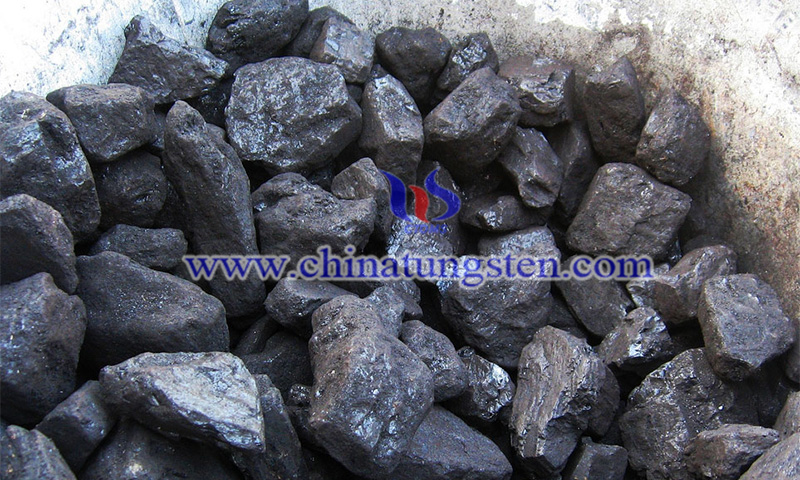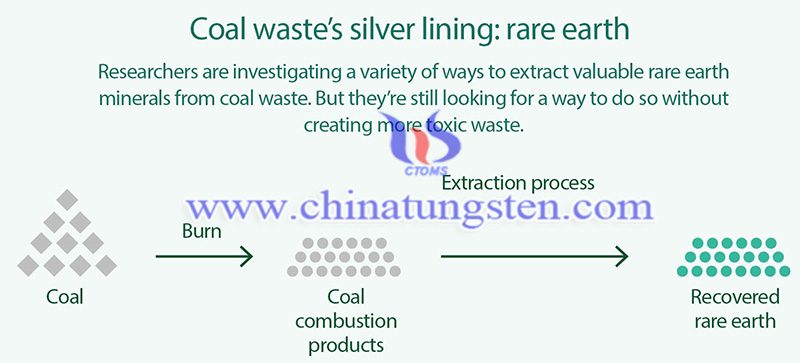Could Rare Earth Minerals Give Coal Countries A Second Life? -Ⅰ
- Details
- Category: Tungsten's News
- Published on Wednesday, 16 February 2022 15:50
- Written by Caodan
- Hits: 551
Coal, the mineral used to generate electricity (thermal) or make steel (metallurgical), is by far one of the worst polluters on the planet. Pilot projects across North America are reducing the use of coal through new energy sources, and could these rare earth minerals, driven by the energy transition, give coal countries a second life?
The burning of fossil fuels such as oil and coal is driving climate change, killing an estimated 8.7 million people in 2018, according to Environmental Research. Annual production in 2019 is 3.7 billion tons in China, 640 million tons in the United States, and 57 million tons in Canada. Despite being an environmental pariah, coal may produce a silver lining to help pave the way to a net-zero carbon emissions future.

Coal combustion produces various solid waste by-products such as fly ash, which contains small amounts of rare earth minerals. These metals are highly conductive and heat resistant and are critical to the world's transition from fossil fuels to advanced green alternative technologies. For example, electric cars and wind turbines use permanent magnets containing neodymium, which is by far the most important end-use of rare earths.
For economically depressed coal nations, using the 3 billion tons of waste coal in the United States to obtain rare earths has the potential to launch them into a new green economy. Last year, President Joe Biden issued an executive order to secure a critical supply chain of manufactured goods, including high-tech devices that require rare earths, such as cell phones, electric cars, and batteries to store wind and solar power. Canada and the United States have signed the Joint Action Plan for Critical Minerals to support clean energy deployment.
Adamas Intelligence's Rare Earth Magnets Market Outlook 2030 forecasts a severe shortage within eight years. China currently produces about 90 percent of the world's rare earths and permanent magnets, leaving the West vulnerable to sanctions and the development of clean energy technologies.
Lisa Evans, a senior advisor with Earthjustice, said, "The possibility of recycling coal for rare earths in coal countries raises concerns. How do we extract rare earths in a way that doesn't create more environmental hazards, doesn't endanger workers, and doesn't leave toxic waste in local communities? All of these questions have to be answered."

The answer comes from Maria Holuszko, an assistant professor at the University of British Columbia who works to identify rare earth sources in tailings ponds and existing coal waste from mines.
Holuszko says, "Recovering rare earth minerals from coal waste for coal countries is complex, including the need to use to acid. We try to minimize the environmental impact, but in general, these processes are energy-intensive and use solvent extraction techniques that are not environmentally friendly."
- Rare Earth Manufacturer & Supplier, Chinatungsten Online: www.chinatungsten.com
- Tungsten News & Prices of China Tungsten Industry Association: www.ctia.com.cn
- Molybdenum News & Price: news.molybdenum.com.cn
- Tel.: 86 592 5129696; Fax: 86 592 5129797; Email: sales@chinatungsten.com





 sales@chinatungsten.com
sales@chinatungsten.com